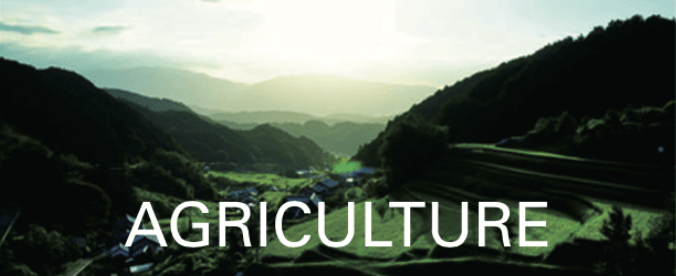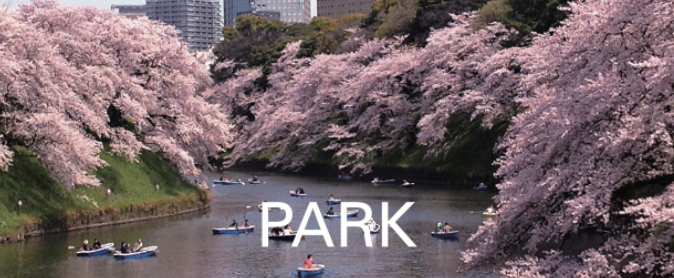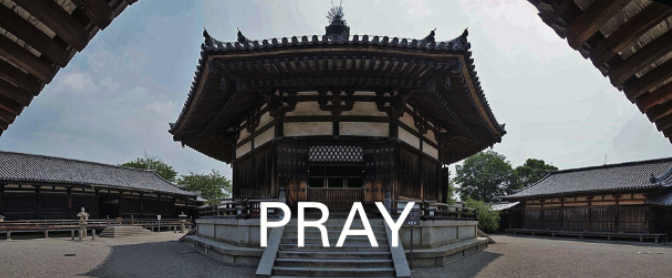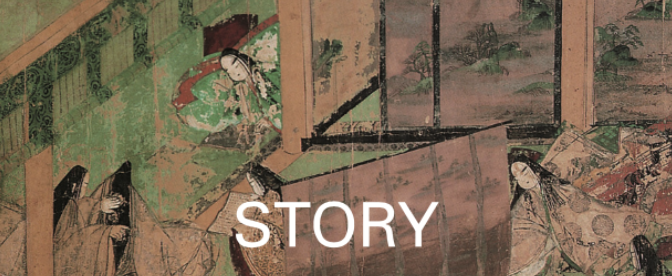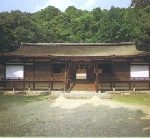
This shrine is listed as a World Heritage site and is located on the other side of Byodoin temple Uji Kyoto. This shrine enshrined Uji no wakiiratsu no mikoto, the prince of Emperor Ojin, Emperor Ojin, in the 3rd century, was regarded as the guardian of warriors, and Emperor Nintoku in the 4th century, was the prince of Emperor Ojin.
This shrine has the oldest main shrine building of the late Heian period in the 11th-12th centuries. The worship hall, which is said to have been dismantled and reconstructed from the Uji detached palace is Shinden-zukuri, a manor of Heian era palatial architecture. The hall conveys the aesthetics of the court culture and remnants of the nobles. There is a famous mineral spring, Kiriharamizu, at this site.
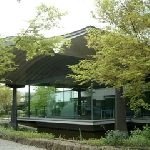
This museum exhibits the life style of the courtier in the Heian period (794 – 1192), at “Heian no Ma,” it’s permanent exhibition. A model of Rokujo-in residence, which is the symbol of the luxury of Hikaru Genji, a protagonist in the Tale of Genji, the 11th century Japanese literature that uniquely depicted the lifestyles of the high courtiers. Hikaru was a superbly handsome man and a genius who lived as an imperial officer.
The residence includes: Shitsurei, setting up furnishing and decoration in the court, Shinden Zukuri, an architectural style of nobles’ residence, an ox carriage, as a play tool, shell-matching game, and Igo, the board game of capturing territories. High-definition video introduces the storyline and charm, and invites you to a beautiful and fragile world. At “Uji no Ma,” the permanent exhibition, the characters of Uji-jujo, Uji chapters of the Tale of Genji, are introduced and the charm of Uji City is guided, too.
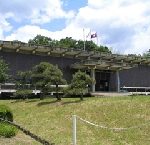
The museum collects and introduces materials such as history, art, archeology, and folklore of northern Kyoto Prefecture. There is the site of Tango Kokubunji, a state-supported provincial temple in the 8th century, in the front of this museum. Kokubunji Temple was ordered to be built in the clean areas of each province.
This place overlooking Amanohashidate – Pine covered, matched that order. But also, the fact that Kokubunji Temple was built at the Harbor of Miyazu, shows that this place was an important gateway to the arrival of other civilizations.
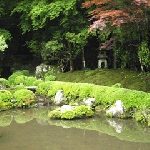
This temple is located in Ohara Kyoto. Kenreimon-in Tokuko (1155 – 1213) was the Empress of Emperor Takakura (1161 – 1181), the mother of Emperor Antoku, and the daughter of Taira no Kiyomori (1118 – 1181), a head of the Heike (Taira) clan who established the first samurai dominated administrative government in Japan.
Kenreimon-in performed religious rites, at this temple, for the salvation of the departed soul of Emperor Antoku and the Taira clan, for the rest of her life, after the Battle of Dan no ura in 1185, a major sea battle between the Minamoto clan and the Taira clan, Heike, in the Kanmon Strait, was completely destroyed by this battle.
This temple is a nunnery in the Tendai sect, which was originally built in 594 by the Prince Shotoku (574 – 622) to perform religious rites for a departed soul of his father. There is Shinjiike pond, a heart-shaped pond, on the west side of the main temple, which was described in “The Tale of the Heike”, Narrative poetry of the struggle between the Taira clan and the Minamoto clan for control of Japan at the end of the 12th century.
Around there, Hime Komatsu, (Japanese white pine), Migiwano Sakura, (cherry blossom to bloom at the end of spring) and moss-grown stones, enable people’s minds to be calm.
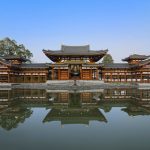
This temple was built on the site of a villa, in the year when it was said that it would become Mappo-no-yo, the destined downfall of Buddhism. In 1053, the following year, its Amidado, this temple was built, dedicated to Amida Nyorai, Amitabha, the principal image of Buddha in Pure Land. All courtiers in the Heian period (794 – 1185) wished for Raigo, the coming of Amida Buddha to welcome the spirits of the dead. The courtiers worked hard to create a scene for when the Amida Buddha arrived from the Western Pure Land.
The National Treasure, a statue of Amida Nyorai, is enshrined in the Byodoin Hou-ou-do, Phoenix Hall. This statue was made in 1053, by Buddhist sculptor Jocho (died 1057) in the latter part of the Heian period. It was completed with the Japanese technique, Yosegi Zukuri, where wood blocks were assembled, after treated and carved. The expression also shows the completion of Wayo, traditional Japanese-style.
The Wayo of expression is the peaceful face rounded buccal surface, the large eyes with downcast eyes, gazing quietly at the worshipers, and the expressions of unlimited kindness. The statue has no difficulty in pulling its chest and its back slightly rounded, with no feeling of tension anywhere.

This museum is at a highland overlooking Kaerumataike Pond (also called Sugawara Pond), and is surrounded by a natural garden called the Bunkaen, which emphasizes harmony with nature.
The Picture Scroll of the Tale of Nezame is a cultural asset, which this museum proudly celebrates on its 60th anniversary. It is thought to be the work of Sugawara Takasue no musume, the daughter of Sugawara Takasue (1008 – 1059?), a Japanese author of Sarashina Diary, writing of travels and pilgrimages.
This picture scroll describes the strange fate of Naka no Kimi, a princess of the Imperial Family, in her romance with Chunagon, a state councilor, who was a sister’s husband, Sadaisho, Major Captain of the Left Division of the Inner Palace Guards, and Emperor Reizei, who was in the Tale.
This picture scroll, with 4 columns of pictures and 4 columns of writing, is still preserved, which has the depiction of nature and the interior is delicate and full of elegance. This is one of the few picture scrolls of the Tale from the Heian period (794 – 1185), and a masterpiece.
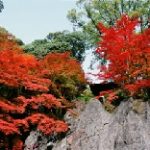
It is said that Murasaki Shikibu (973/978 – 1041/1031), a Japanese novelist, poet and court lady, confined herself to this temple to pray, for seven days, and got the idea for the Chapter of Suma and Akashi in the Tale of Genji, on the night of the harvest moon on the 15th day of the 8th lunar month. The Tale of Genji was a unique depiction of the lifestyles of high courtiers in the 11th century, by Murasaki Shikibu. Therefore, the Room of Murasaki Shikibu, was built at the main temple.
This temple is one of Japan’s leading temples of Kannon, the Buddhist Goddess of Mercy, and a Sacred Pilgrimage site. It was built on a massive bedrock of a natural monument, wollastonite, and is located on the right bank of the Seta River, flowing out from Lake Biwa.
This temple was a desired place for the court ladies to pray to Nyonin Jobutsu, a woman becoming a Buddha, during the Heian period (794 – 1185). She believed the present life is a just way to connect to the future life.

Akashi has been a scenic spot since ancient times, and it has been said that this temple was “Akashi Nyudo no Hamabe no Yakata” – the beach residence of Akashi Nyudo, the father of Lady Akashi and a cousin of Genji’s mother in the Tale of Genji. The Tale of Genji is a unique depiction of the lifestyles of high courtiers in the 11th century.
This temple is in Taikancho, Akashi. Its name is a collective name of two temples: Kaiko-in Temple, and Enju-in Temple. At this temple, there is a stone monument, “Hikaru Genji Koseki Akashi no ura no Hama no Matsu” – A stone monument of the model site of the Chapter of Suma and Akashi in the Tale of Genji, made by Matsudaira Tadakuni (1597 – 1659), the lord of Akashi Domain, Harima Province.
At the Enju-in Temple, there is Karesansui, a dry landscape garden, said to have been made by a great swordsman, Miyamoto Musashi (1584 – 1645). Musashi was a Japanese swordsman, writer and painter, who had taken care of the castle town layout, in the building of Akajijo Castle.
Aware — sorrow, pathos, and longevity — are gathered here
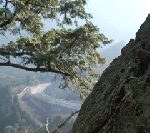
The Suzuka Pass is located on the route from Kinai region, provinces surrounding Kyoto and Nara to Tokaido, Chubu, and Kanto regions. The summit of Mt. Nyudogatake, has wonderful views of the Suzuka Mountains, including Mt. Gozaisho, and Ise Bay.
Yamatotakeru no mikoto, a Japanese legendary prince of the Yamato Dynasty, and the son of Emperor Keiko, became exhausted along the Suzuka Pass on his way home to Yamato Province, from his expedition to the east, and died. He was father of Emperor Chuai, in the Miwa Dynasty, before the Kawachi Dynasty in the 5th century.
When he died, he made a poem, Yamato ha Kunino Mahorobo Tanazuku Aogaki – Yamato is the best province in Japan. Yamato is surrounded by mountains, like green hedges, which overhang in layers. It is said that after making the poem, he transformed to Hakucho, a swan, which returned to Yamato Province by flying.
The tomb of Yamatotakeru no mikoto, the Hakuchoryo burial mounds, is surrounded by deep and quiet greenery.
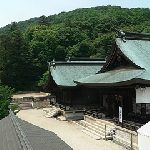
This shrine was located at the northeast foot of Mt. Kibi no nakayama which was worshiped by the Okayama domain during the the Edo period (1603 – 1868). It became the Bizen Ichinomiya: Bizen, Okayama’s most important provincial shrine, after the Taika Reforms in 645: political innovations led by Prince Nakanoue (Emperor Tenji) (626 – 672), and Furiwara Kamatari (614 – 669), against the powerful Soga clan to extend the direct dominion of the Emperor’s family over the whole of Japan.
Kibitsuhiko no mikoto, legendary Japanese and the son of Emperor Korei, was a general dispatched by Emperor Sojin, and was a model of Momotaro: a popular hero of Japanese folklore. According to the legend, Momotaro was born from a Giant peach. He and his animal friend penetrated Onigashima (the Ogres’ fort), beat the Ogres into surrendering, and returned with the Ogres’ plundered treasure.
The descendants of Kibitsuhiko no mikoto, were generationally Kuni no Miyatsuko, a regional administrator of Kibi Province, connected to the Kibi clan that supported the Yamato Imperial Court. Inukai Takeru no mikoto was a retainer of Kibitsuhiko no mikoto, and became the founder of the Inukai clan.
Inukai Tsuyoshi (1885 – 1932), was a Japanese Prime Minster and the descendent of Inukai Takeru no Mikoto.
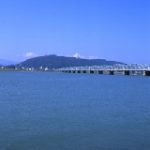
When Funanoo, the son of Prince Toneri and a poet, visited the Naniwa no Miya, Naniwa Palace in the accompaniment of Emperor Shoumu (701 – 756), in 734, he looked over the mountain in Awa Province over the sea, and wrote a poem. The poem began with “Haru Sangatsu, Mayunogoto Kumoini Miyuru Awan no Yama: Looking over the mountains of Awa, which looks like a long horizontal eyebrow over the clouds in spring, – “. The father of the prince was Prince Toneri (676 – 735), a son of Emperor Temu (631 – 686).
The prince deeply believed in Buddhism and he served the general master of Gigaku performing in the ceremony to consecrate the Great Buddha, Vairocana. Gigaku, is the masked drama-dance performance, imported to Japan in the Asuka period (550 -710). The mountain in Awa Province at the poem is Mt. Bizan, Tokushima City.
It takes 6 minutes to the summit by a ropeway and the view from the summit overlooks the Kii Channel and Naniwa Osaka. Funanoo’s poem ended with “Kogu Funeno Tomarimo Shirazu: I can see a boat rowing there.” The prince was exiled to Oki Island, for suspicion of rebellion, in 762.
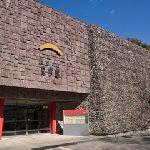
Tosa Province Kochi has been surrounded by the majestic Pacific Ocean in the south and the steep Shikoku Mountains in the north. This Literary Museum introduces literary people of Kochi Prefecture, theme by theme, who have grown up in this unique climate.
This museum exhibits Tsukijigaku, a part of the Hengaku of Matsuyamaji Temple at Ida Kuroshio Town. Tsukijigaku was attributed to Ki no Tsurayuki (872? – 945), a Japanese author, poet and courtier of the Heian period. It also exhibits strips of fancy paper by Imamura Tanushi (1765 – 1810), a Japanese classical scholar in the Edo period (1603 – 1868), who adored Kamo no Mabuchi (1697 – 1769), a Japanese poet and philologist.
Tanushi studied Japanese classical literature, and researched and guided Manyoshu, the 8th century anthology of Japanese poetry.
– Tsurayuki was the provincial governor of Tosa Province and said that the Japanese poet had the power to move the sky and the earth without force. The Japanese people believed the nature and the soul could synchronize.



